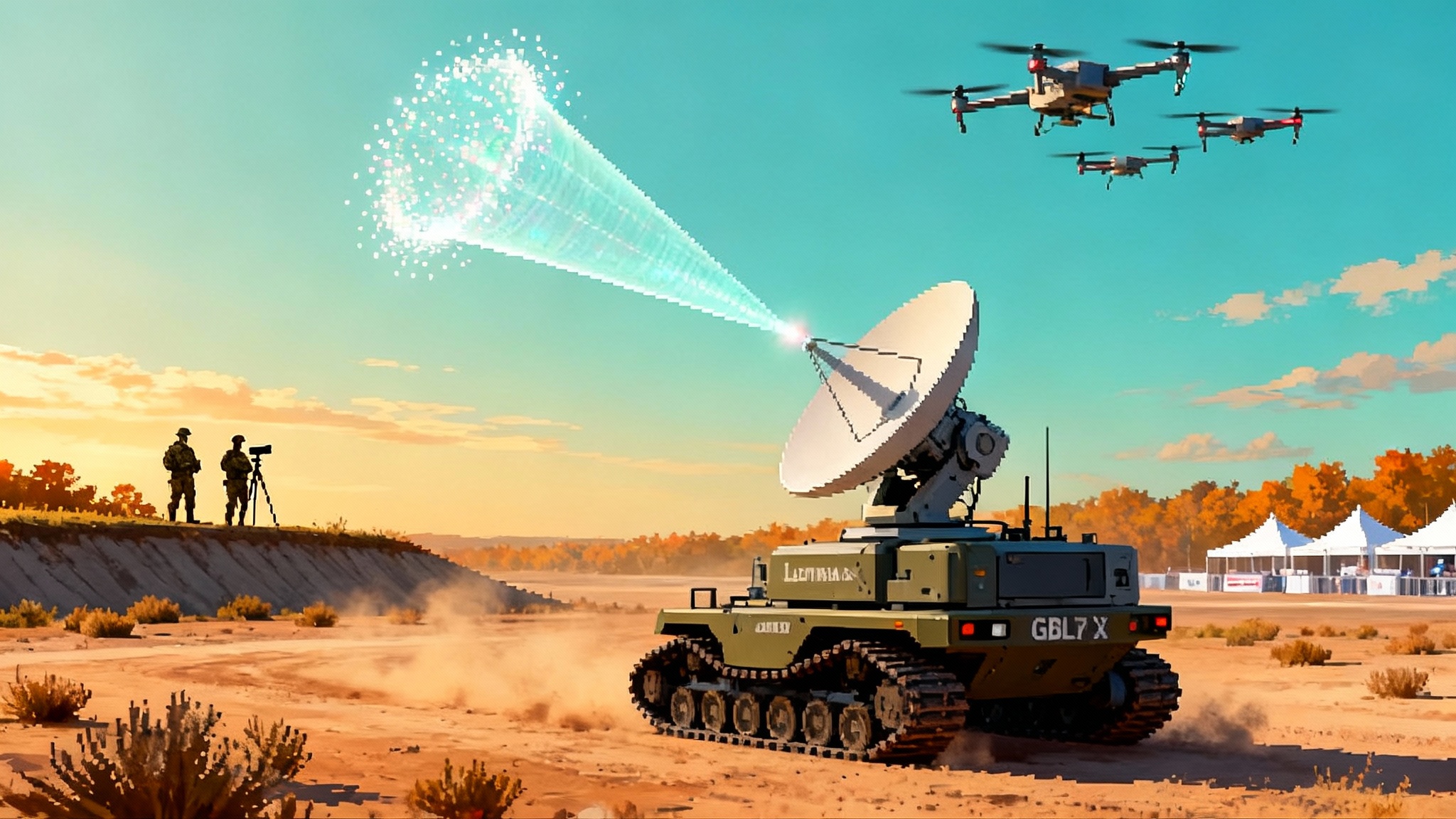Victus Sol Makes Responsive Space Operational at Last
With Victus Sol, the U.S. Space Force moves tactically responsive space from one-off demonstrations to an on-call service. A 24-hour launch window, on-orbit maneuver, and faster OSP-4 task orders reshape deterrence and allied operations in the Indo-Pacific.

The moment responsive space became real
For half a decade, tactically responsive space sounded like a promise. The U.S. Space Force ran impressive sprints that proved what might be possible, then went back to planning. Victus Nox in 2023 moved a satellite from alert to liftoff in roughly a day. Victus Haze began laying the groundwork for rendezvous and proximity operations. Now comes the pivot point. In February 2025, Space Systems Command awarded Firefly Aerospace a launch contract for Victus Sol, explicitly positioning the mission as the next step toward an operational, repeatable service rather than a one-off science project. The government’s framing is the tell. It was not another demo. It was a buy. Space Systems Command’s announcement made that clear to those reading between the lines.
Victus Sol formalizes a posture that matters in a crisis. A small launch vehicle is kept available while still flying other missions. A spacecraft is integrated and held ready. When Space Systems Command triggers a call up, the clock starts, and the team moves from alert to payload encapsulation to range slot to liftoff on a timeline measured in hours. It is a military drill, not a one-night performance.
Why a 24-hour call up changes the kill chain
In the space fight, time is a weapon. The traditional kill chain for an adversary targeting U.S. space assets assumes the United States cannot replenish or reconfigure quickly. That assumption affects how an opponent allocates sensors, jammers, and kinetic systems in the first place. Rapid launch breaks that assumption.
Think of a football offense that always has a two-minute drill ready. When the defense knows the offense can change tempo at any snap, it must call more conservative coverages, keep players fresh, and avoid risky alignments. Victus Sol signals a similar tempo change in orbit. A 24-hour call up gives U.S. commanders the option to inject a new node into a constellation inside a single decision cycle. That compresses the adversary’s own detect decide act loop in three ways:
- It denies persistence to jammers or spoofers by making their effects fleeting. If they blind or distort a slice of a constellation today, a replacement or augmenting sensor can be on orbit tomorrow.
- It complicates targeting. A launcher and payload on true alert means an adversary cannot plan against a fixed architecture. New satellites can appear in orbital planes that were empty yesterday.
- It shifts escalation costs. Destroying or degrading one satellite no longer produces a sustained advantage if replenishment arrives as fast as damage is inflicted.
This tempo pairs naturally with joint command-and-control advances such as IBCS and the any-sensor model, which accelerates sensor-to-shooter tasking across domains.
None of this requires dozens of call up launches a year. The credible ability to do it a few times on short notice is enough to alter behavior before a crisis turns hot.
From static satellites to dynamic operations
Early responsive missions focused on speed to orbit. The next layer is agility in orbit. Victus Haze introduced the concept to the public vocabulary by emphasizing rendezvous and proximity operations, tactics that let a small vehicle inspect, escort, or shield a high value asset. Victus Sol threads these ideas into an operational cadence. A satellite that can change planes, adjust altitude, or shift longitude in geosynchronous orbit enables real-time maneuver warfare in space.
Dynamic operations matter for resilience. Constellations become harder to fracture when nodes can move in response to threats, replace failed functionality, or create angles that frustrate an attacker’s geometry. If a jammer paints a swath of low Earth orbit, a maneuverable spacecraft can slide around the beam. If a satellite is struck by debris, a reserve can move into its slot and backfill the gap. Complementary investments in resilient PNT beyond GPS further reduce single points of failure across the force.
Procurement is part of the weapon system
Rapid effects in orbit depend on rapid decisions on the ground. That is the logic behind the Orbital Services Program 4, often shortened to OSP-4, Space Systems Command’s quick-turn contracting tool for small to medium launches. OSP-4 is structured to compete task orders among a roster of qualified providers and to award missions that launch within 12 to 24 months after order. It also includes periodic on-ramps so new entrants can join the vendor pool without waiting for a decade-scale recompete. That sounds dry. It is not. Faster ordering is what makes alert postures financially and logistically possible.
Here is the practical impact:
- Space Systems Command can hold at-risk funding for small launch without committing to a specific provider years in advance. That gives it leverage and flexibility.
- Launch companies can keep production flowing with commercial and civil work while still reserving a vehicle for a call up window. That stabilizes factories and avoids cold lines.
- Mission teams can iterate on procedures with each task order instead of relearning from scratch with every new contract vehicle. That builds muscle memory.
When you combine these pieces, procurement becomes an extension of tactics. The contract vehicle is not simply paperwork. It is the pacing function that keeps industry responsive and government agile.
How Victus Sol hardens constellations
Responsive space is often framed as a way to replace what is lost. It is more powerful as a way to prevent loss in the first place. Victus Sol helps on three fronts:
- Distribution. If you can add small nodes quickly, you can spread a mission across more satellites. A distributed architecture can survive hits that would cripple a monolith.
- Deception and dilation. The ability to add a decoy or auxiliary node forces an attacker to allocate more interceptors and more time, diluting their initial salvo.
- Recovery time. Even if an adversary achieves an effect, the window of advantage closes fast if U.S. forces can refly a capability in a day.
Put simply, the mission is not only to reconstitute. It is to deny the adversary a predictable payoff for aggression.
The follow-ons that lift responsive space into geosynchronous orbit
If Victus Sol is the operational bridge, the 2026 missions called Victus Surgo and Victus Salo are the stress tests that push dynamic operations into higher energy regimes. Space Systems Command and the Defense Innovation Unit selected Impulse Space to provide the in-space vehicles, with a plan that uses a high-energy kick stage and a maneuverable orbital transfer vehicle. Impulse disclosed high delta-v performance and a concept that moves from low Earth orbit to geosynchronous transfer orbit and up to geosynchronous orbit, which is where many of the most valuable national security satellites live. Those details matter because they show responsive space is not confined to low Earth orbit. They point toward a world where the United States can reposition or augment assets where the strategic stakes are highest. Impulse Space’s program update lays out the architecture and the performance envelope.
Victus Salo complements that by keeping a highly maneuverable vehicle in low Earth orbit to trial rapid retasking and hosted payload swaps. Together, Surgo and Salo move responsive space beyond launch speed into sustained mobility. High delta-v is the currency of freedom of action. The more a vehicle can change its velocity, the more ways it can solve problems on orbit.
What this means in the Indo-Pacific
U.S. Indo-Pacific Command covers the largest geographic area of any combatant command. Distances are long and the electromagnetic environment is contested. Responsive space gives commanders in this theater two concrete advantages.
First, it compresses the time between intelligence gaps and intelligence fixes. If a regional actor masks activity under clouds or jamming in the morning, a small optical or radio frequency sensor can be on orbit by the next day to look from a different angle or frequency. That matters for maritime domain awareness across the first and second island chains and for missile warning from mobile launchers. The Navy’s push toward carrier launched collaborative combat aircraft will also benefit from pop-up space coverage that can be tasked on short notice.
Second, it enables combined operations with allies who are also accelerating space capabilities. Australia, Japan, and other partners are investing in small satellites, sovereign launch sites, and data sharing architectures. A standing U.S. responsive launch and dynamic operations capability is the missing piece that lets a combined tasking cell schedule pop-up coverage windows, share tasking across satellites, and coordinate on-orbit maneuvers for protection or persistence. Integration should start with three practical steps:
- Harmonize call up playbooks. Build a shared alert-to-launch timeline with allied range and airspace approvals pre-negotiated. Practice it during major exercises each year.
- Pre-arrange hosted payload slots. Reserve volume and interfaces on maneuverable vehicles that can host an allied sensor or router on short notice.
- Align networks. Use common transport layers and ground stations so a newly launched or newly maneuvered node can pass data to all partners the minute it is commissioned.
These are not technology moonshots. They are policy and process choices that unlock the tactical value of systems already on contract.
The industrial base is now on the clock
Turning responsive space into a standing capability also flips pressure onto industry. The call up window is only credible if launchers, buses, payloads, ranges, and ground segments can all move in concert. That demands a different factory rhythm and different business choices.
- Launch cadence. Providers must hold one vehicle in a flight-like state without starving their manifest. That argues for vertically integrated production, lean changeovers, and quick recertification procedures.
- Payload readiness. Sensor teams need standardized mechanical and electrical interfaces so a satellite can be mated without bespoke adapters or weeks of verification. Think of it as the same class of plug for many campuses.
- Range ops. Spaceport teams must pre-bake late notice windows, telemetry routes, and coordination with air and maritime authorities. The speed is earned on the ground long before the alert arrives.
- Ground software. Networks must accept a new node the day it flies. That means automated mission planning, standard encryption, rolling certificates, and cloud-forward architectures that scale on demand.
If that sounds like the playbook of rapid software deployments, it is. The lesson of the past decade in information technology is that the system learns to ship fast by shipping fast. Victus Sol is where space begins to adopt the same muscle memory.
What to watch in 2025 and 2026
Several specific indicators will tell you whether responsive space is truly entering the bloodstream:
- Standby metrics. Does Space Systems Command publish a steady cadence of standup drills with measured times for encapsulation, roll to pad, and terminal count rehearsals.
- Vendor depth. Do additional OSP-4 providers complete orbital flights and enter competitions, widening the bench for call up windows.
- Dynamic ops playbooks. Do Space Safari teams release tactics, techniques, and procedures for orbital maneuver, escort, and deception, even in abstracted form.
- Allied reps and sets. Do large Indo-Pacific exercises include a live or shadow launch timeline with allied payloads pre-integrated and data flowing to a combined cell.
- Surgo and Salo energy. Do the 2026 missions demonstrate the promised delta-v and time-to-geosynchronous outcomes that make mobility at high altitude real.
A yes on even three of these will mean the system is maturing. A clean sweep would mark a generational shift.
The strategic payoff
The real victory in responsive space is not a single fast launch. It is the deterrence effect of a force that is hard to blind, hard to break, and quick to recover. Victus Sol matters because it moves the idea from experiment to habit. OSP-4 gives the government a way to buy that habit at tempo. On-orbit mobility gives commanders the freedom to apply it where it hurts.
Adversaries will adapt. They will press harder on ground stations, on logistics, and on cyber seams. That is exactly why the next set of investments should focus on three actions that turn speed into staying power:
- Preposition spare spacecraft, buses, and hosted payload carriers at multiple integration sites, including at least one on the West Coast and one inland. Keep them in a maintainable warm state, not cold storage.
- Fund a permanent combined responsive space cell that sits with Indo-Pacific Command and U.S. Space Command planners, with allied liaisons on shift. Make it responsible for rehearsals and for the day-of-call decisions.
- Write and enforce interface standards for payloads, kick stages, and ground data paths so that an approved allied sensor can ride on a U.S. vehicle with hours of integration, not weeks.
Do these, and the promise of 24-hour launch and on-orbit agility will translate into a deterrent that a rival must respect.
The bottom line
Victus Sol is the crossing point. It signals that tactically responsive space is no longer a series of trial runs. It is an operational tool that compresses the kill chain, hardens constellations, and prepares the path for high energy maneuvers in 2026. The practical work now is to make the process boring. When a call comes at 0200, the best measure of success will be that the team yawns, runs the playbook, and puts a new satellite where it needs to be before sunrise.







